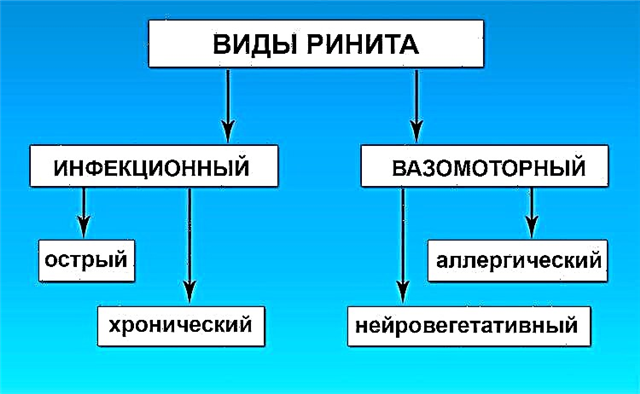An enlarged heart is not so common among common heart pathologies. The reasons for this in an adult can be different. Such a pathological condition is not considered as a separate disease, since it develops as a consequence of an already existing disease of the cardiovascular system.

The reasons for the development of pathology
An enlarged heart in an adult is also called myocardial hypertrophy syndrome. Proceeding against the background of the underlying heart disease, such a condition can aggravate the overall clinical picture and worsen the prediction of the underlying pathology. The enlargement of the right ventricle of the heart is less common than the left, in rare cases there is a change in the size of both ventricles. According to statistics, against the background of concomitant cardiac pathologies, myocardial hypertrophy leads to mortality in 75-80% of cases. Therefore, timely detection and treatment of diseases of the cardiovascular system will be the key to a stable state of health.
The average heart weight in adult men is about 330 grams, in women - about 250 grams. To determine the external size of your own heart, just look at your clenched fist - the volume of your heart is about the same.
This pathology can be found both in childhood and later in life. Athletes are susceptible to myocardial hypertrophy, since during active training the heart is exposed to an inadequately increasing load, actively pumping blood. The heart muscles are overstrained, an increase in the ventricle occurs, or even two, a state of myocardial hypertrophy occurs.
With ischemic heart disease, there is a reduced blood flow to the organ. The cells of the main muscle do not receive sufficient nutrition, as a result of which they begin to actively contract, the process of their transformation into connective tissue begins. It no longer has the ability to stretch or contract, therefore only the cavities of the heart are subject to increase.
This phenomenon is most pronounced during myocardial infarction - a certain part of the muscle tissue of the wall becomes inactive, which leads to the formation of a scar in this place.
The most common factors leading to an increase in the size of the myocardium are excessive stress on the heart during hard physical work, too much activity during sports, bad habits, as well as concomitant pathologies of the cardiovascular system. Summing up, the main reasons can be distinguished:
- heart defects (both congenital, hereditary, and acquired during life);
- physical labor and various hard sports that put excessive stress on the heart;
- ischemia;
- arterial hypertension;
- abuse of tobacco products and alcoholic beverages;
- overweight;
- sharp, unexpected loads on the heart muscle, against the background of an inactive, sedentary lifestyle.
This condition can have a hereditary etiology, that is, it can be transmitted by generations from relatives suffering from cardiovascular diseases. In the presence of such an inherited disease as aortic stenosis, arterial hypertension, mitral stenosis, a large heart is not such a rare occurrence. The enlargement of the ventricle, or both, occurs under excessive stress, when the organ triggers a compensation mechanism in order to protect itself. As a result, the size of the myocardium is increased.
Carditis, rheumatic heart disease are heart diseases that can also lead to the fact that it becomes enlarged against the background of flabbiness of the myocardial muscles, while the ventricles grow in size, the heart expands transversely. There have been cases when such a hypertrophied organ occupied both sides of the chest.
Myocarditis is a heart pathology that occurs as a result of a severe viral infection. When the disease worsens, the patient feels short of breath, becomes lethargic, a picture of general malaise appears, the heart beats at an accelerated pace. There is an increase in the right ventricle of the heart against the background of acute heart failure. This condition also causes myocardial hypertrophy.
Septic endocarditis is considered a dangerous disease, since it occurs against the background of infection of the inner surface of the heart with a microbial environment. As a result of infection, the valves, muscles, left and right ventricles undergo significant changes. The patient suffers from fever, aching joints, increased body temperature (which is often confused with symptoms of a cold), myocardium increases in size.
Symptoms
Any manifestations of pathology may be absent for a long time, which is why this syndrome is considered very dangerous. The patient may not suspect that he has a large heart, as well as the reasons that caused this condition. Pathology can be detected on an x-ray, during a routine preventive examination, in the worst cases - during an autopsy after sudden death. Myocardial hypertrophy can be manifested by the following symptoms:
- Shortness of breath of unknown etiology, which occurs both during physical exertion and at rest.
- Pain in the chest, similar to the symptoms of angina pectoris.
- Heart rhythm disturbances.
- Swelling of tissues, deterioration in the removal of fluids and salts from the body.
- Dizziness, fainting.
The listed symptoms should be the reason for a mandatory visit to a therapist, who, after a thorough examination and study of the patient's complaints, will send him to a cardiologist for examination.
Diagnose myocardial hypertrophy using ultrasound, it shows itself to be the most informative in terms of identifying cardiac pathologies.
 If they are detected, it is recommended to conduct an ECG (recording an electrocardiogram), and to clarify concomitant diseases - conducting magnetic resonance imaging.
If they are detected, it is recommended to conduct an ECG (recording an electrocardiogram), and to clarify concomitant diseases - conducting magnetic resonance imaging.
Consequences of the disease
With an enhanced mode of operation of the myocardium and its subsequent increase, it is imperative to be observed by an experienced cardiologist and undergo regular examination courses. An important part of drug therapy will be to rethink your lifestyle. In particular, you need:
- Give up bad habits - alcohol and cigarette abuse.
- Get rid of obesity and extra pounds to reduce the load on the heart muscle.
- Reduce the amount of salty, smoked, cholesterol-rich foods you eat.
- Balance nutrition, enrich with microelements and substances to normalize heart function.
- Reduce inappropriate stress on the heart.
If you do not take measures to maintain the myocardium in a healthy state, it is fraught with the development of stroke, heart attack, heart failure and even death.
People with alcohol dependence are at a special risk group. Against the background of constant intoxication, the heart of a drinking person sometimes reaches very large sizes. Restoration of the size of the myocardium can occur only in case of complete rejection of alcohol.
Medicine offers modern drugs and methods of treatment that, if applied promptly, will help lower blood pressure levels, normalize blood flow to myocardial muscles and return the heart to its original size. The main thing for successful treatment is to detect pathology in time.
Heart enlargement in children
The main reasons for the increase in the size of the myocardium in children are:
- Congenital heart defect.

- Bacterial infections that cause rheumatism or endocarditis of the heart.
- Myocarditis is an inflammation of the heart muscle.
- Hypertrophic cardiomyopathy is a genetic pathology with enlargement of the heart cavities against the background of thickening of the walls.
- Consequences of heart surgery.
- Neoplasm of a malignant or benign nature in cardiac tissues.
- Extracardiac factors - malnutrition, drug reactions, toxoplasmosis, sarcoidosis, and others.
An enlarged heart in a child is accompanied by a slowdown in weight gain and general development, tissue edema, frequent colds, shortness of breath, heart rhythm disturbances, pallor or cyanosis of the skin.
Suspecting a similar condition in a child, the pediatrician will send him for x-rays, biopsy of cardiac tissue, echocardiography and ECG. Such measures will help to timely identify possible pathology and start treatment.
Methods of therapy for hypertrophied myocardium are to improve the normal functioning of the ventricles and heart valves, improve tissue nutrition and vascular permeability.
Reducing the volume of fluid that circulates through the body will also reduce the load on the myocardium and stabilize the patient's condition.
People with hypertrophied myocardial syndrome must be registered with a cardiologist and systematically undergo drug therapy. A regular examination of the heart is shown to monitor the situation in dynamics.




